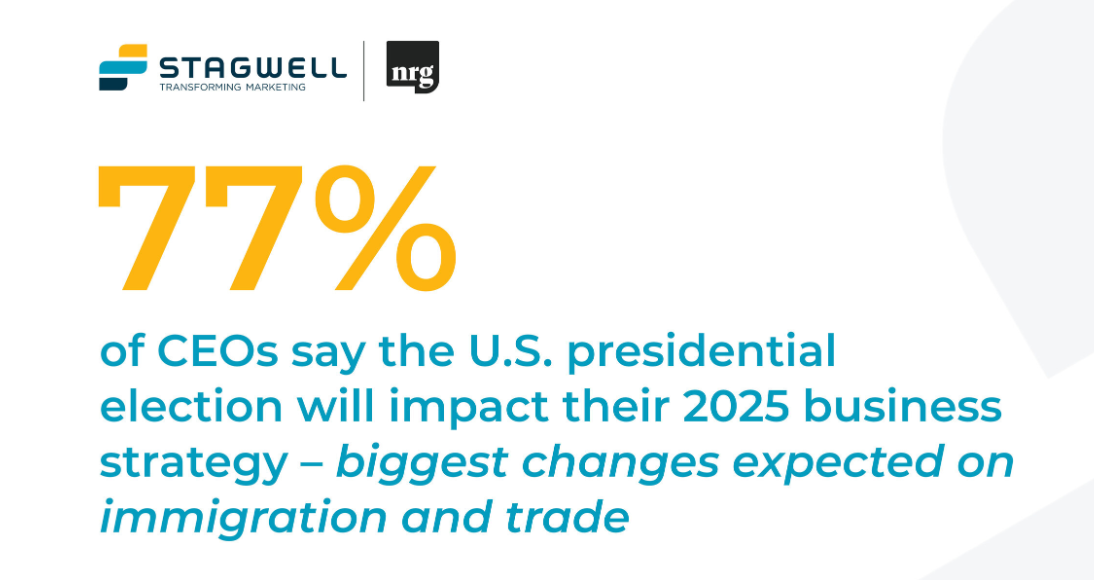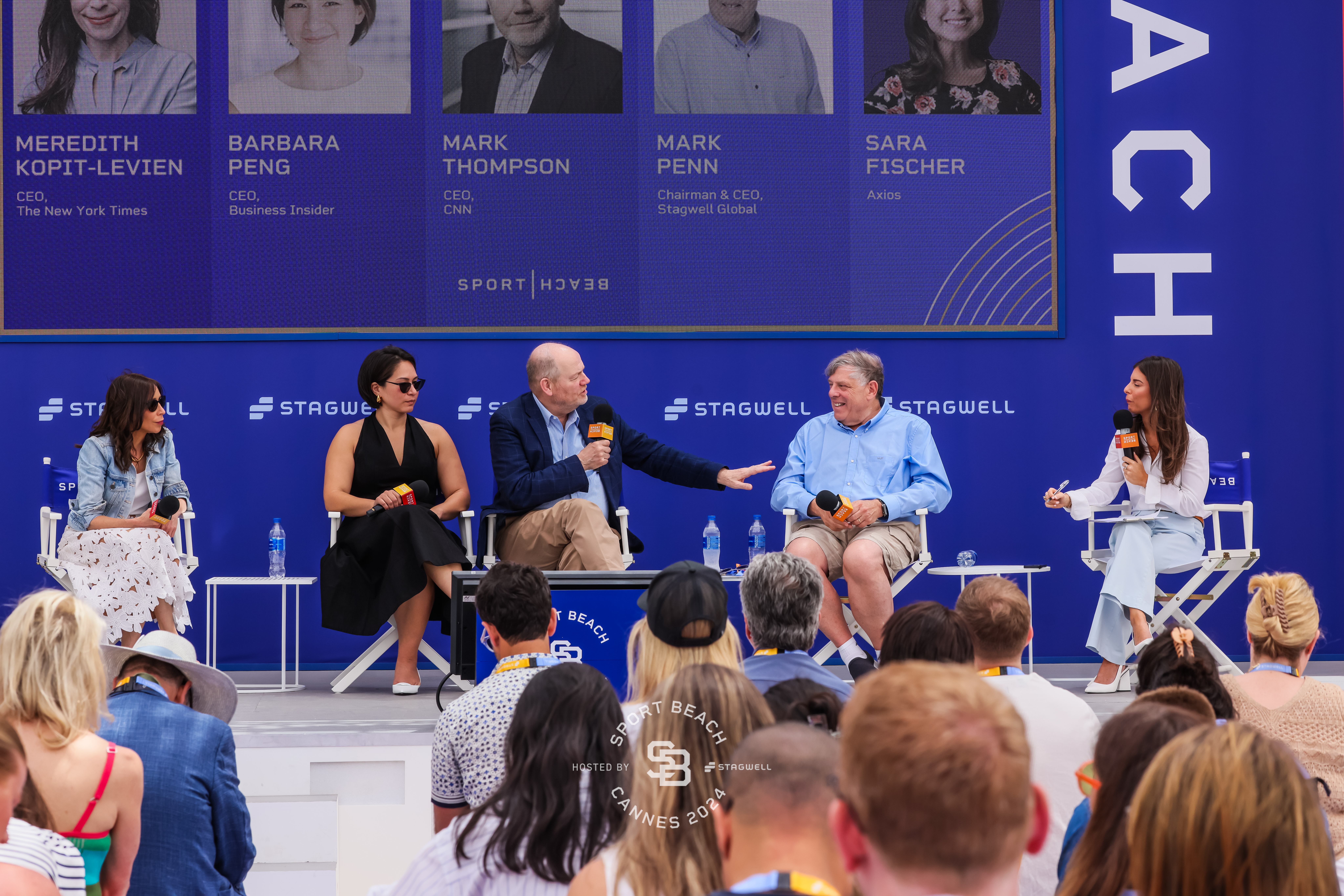CONTACT
hello@stagwellglobal.com
SIGN UP FOR OUR INSIGHTS BLASTS
Americans swear by the marketing value of the Super Bowl and a host of mythologies surround ideal slot placement, annual “best of” lists, and more. But price tags, declining viewership, and the global pivot away from traditional TV advertising makes us wonder. As the Super Bowl concludes and the Olympics continue, we asked global leaders from Stagwell and our affiliate partners for their thoughts on this key question: what is the value for modern brands in major sporting tentpoles like the Super Bowl, World Club or Olympics? Explore four POVs below.
WTF (Where’s the Freaking Value?)
Toby Southgate, Global CEO, Forsman & Bodenfors
Welcome, both linear and on-demand viewers, to the annual season of marketing insanity that is the Super Bowl. Welcome to lists, best-ofs, some epic voiceover casting and – for a limited time only! – music licensing and talent fees that’ll make grown adults weep.

This year, as happens with frequency on our rolling global events calendar, we get to layer the Winter Olympics on top of the Super Bowl boondoggle. “Where should I be investing my media dollars?” comes the plaintive cry of marketers across the land. “Who cares, it’s the freakin’ Super Bowl! Snap it up while you can!” And when snapping up comes in at a couple hundred thousand dollars a second – airtime only – then maybe a cynical voice of reason somewhere should ask the simple question: WTF? Where’s the Freakin’ Value?
Whoever it was who really said “half my marketing budget works, I just don’t know which half” could probably hold up the Super Bowl, or any one of the other tentpole global sporting properties, as the primus inter parus examples of this dichotomy. If you’re there and you get it right, people will talk about you. If you’re there and you get it wrong, people will talk about you. If you’re not there, people will talk about you not being there.
For Super Bowl specifically, there’s a purity of value by association that no other event can command. This remains the most-watched live event on the planet. It happens in one evening (unlike the Olympics or the FIFA World Cup), and – here’s the incredible part – it’s maybe the one televised event where real people in the real world will engage in conversations about the advertising they see. You could probably run a very simple segmentation analysis and find 3 major buckets of Super Bowl advertising – the funny, the emotional, and the weird. All have the power to engage and stimulate, or to isolate and offend. But what unites every marketer committing to this opportunity is the knowledge that just being there is no longer enough.
What happens around the 30 seconds your brand is on air? If you do break through sufficiently to provoke a conversation in the real world, how do you keep that momentum moving? How do you translate it into commercial impact? If your agency partners aren’t pushing that agenda as hard as they are the creative execution of the timing of the placement, then they’re not helping you resolve the “which half works?” question. Because now it’s all linked. And it all has to work.
Unifying Moments Make the Investment Worth It
Anna Panczyk – Chairwoman of the Supervisory Board, Brand New Galaxy, UK
For me, the answer is built into the question. Yes, the world is fragmented and people do feel disconnected – and so now, especially after the past two years, there’s a renewed impulse for people to find reasons to connect and be together. Sport offers a great way for brands to connect to families, groups of friends and fans – and sometimes even a whole country – with a straightforward common understanding and message.

Sports allows brands to generate this reach and awareness on a huge scale, but also to tie itself into those personal feelings of togetherness, connection, pride. Sport involves powerful emotions – and let’s not forget, playing, watching and sporting is enjoyable and fun.
On the other hand, being directly commercially involved in these sort of events is one of the most expensive routes to market. Brand Keys research (https://brandkeys.com) showed that only about 20% of the brands that advertise during prestigious events like the Super Bowl actually emotionally engage viewers. So, you could say – and many do - that involvement like this s a waste of money. But the actual impact of these things is harder to measure. There are plenty of Olympic or Super Bowl ads that stay with you, resonate beyond, become shared, transform into memes. And there are plenty of lower–level activation that don’t carry the same cost, but still allow brands to benefit (activations on social media, sales promotions etc).
What sporting events prove to us every time is that it is always about the journey you take, not just the ultimate goal. And the same logic applies to those great campaigns which – yes, at the level of buying a Super Bowl ad, can also be hugely expensive. But brands continue to recognise the fact that these are rare and unique moments to be shared with their potential users or brand lovers. Moments of national unity, mass awareness, positivity, togetherness and fun – which brand wouldn’t want to get involved?!
Sport is the New Fireplace in a Modern Household
Ashish Khazanchi – Managing Partner, Enormous Brands, India
Where does broadcast stand in the time of Reels, Stories, OTT and the severely divided attention economy? Sport, for most, is possibly the last remaining bastion of appointment viewing across the world. The bigger the stage, the bigger the draw of it.

Events like the Super Bowl, FIFA, Olympics, IPL are important for brands for reasons larger than just the univariate way of looking at it for pure reach. The key for brands really is the intense engagement. Sport for most audiences is a part of identity, and identity narratives. There’s intense identification with the heroes and the myths and their teams. This makes big sporting moments the last remaining lean-forward viewing platform in the era of skip ads and incessant scrolling. Sport is the new fireplace in a modern household. It gets families, friends and communities together. There’s joy, conversations, laughter, tears, jubilation and people huddled together over shared nervous energies. These moments are prime for brands to tap into this energy and audience engagement to drive the conversations towards greater brand love.
How Can Culturally Important Moments Help Tell Brand Narratives?
Daniel Felipe Cuervo – Strategic Planning & Growth VP, Buentipo, Colombia
Culturally important moments for each country, such as the Super Bowl, World Cup, or Olympics, are moments that brands should take advantage of, for the good and not for the bad. These types of events are perfect for brands to talk about their values and beliefs beyond the product they want to advertise or sell.
The budget investment that brands need for these spaces should be leveraged as a long-term strategy, rather than their bottom lines in the short-term. Our recommendation to brands: Be smart. Take advantage of this space to create advertising pieces that are highly relevant and above all, tell a story that answers why your brand exists. Go beyond the hunger to sell your product and use this as a chance to communicate your purpose, values and beliefs as a brand.
Follow Stagwell on LinkedIn to keep up with the latest news, work, and perspectives from the global Stagwell network.
Related
Articles
In the News, Press Releases, Thought Leadership
Oct 30, 2024
77% of CEOs Say the Election Will Impact their 2025 Business Strategy; 85% are Bullish on Investment in the Gulf Region, Reveals Stagwell (STGW) Survey

Marketing Frontiers, Thought Leadership
Jul 26, 2024
Game On for In-Game Advertising? Four Things Marketers Should Know About Gaming
It's clear from dozens of Stagwell’s interviews with senior marketers…
Thought Leadership
Jun 28, 2024
Hitting the Mark: Future of News Takeaways from Cannes Lions
Stagwell brought the Future of News to Cannes Lions, where…
Newsletter
Sign Up
These days, good Super Bowl marketing is about more than the ad you run during the big game. Digital marketing’s rise emphasizes creative, omnichannel efforts that leverage emotional resonance and new storytelling mediums to drive business impact. Four key evolutions are changing the ways brands tackle this football tentpole:
- New Definitions of “Super Bowl Campaigns” leave brand marketers to ask: how do I run a Super Bowl campaign that’s more than just the ad?
- New Experiments in Cutting Edge Tech driving powerful new creative dimensions to the consumer experience at and around The Big Game
- New Challengers joining the ranks of advertisers as digital levels the playing field of who can afford to make magic out of a Super Bowl moment
- New Platforms Driving Importance of Social in the ever-evolving Big Game media and content mix.

1. New Definitions of Super Bowl Campaigns
Last year, for the first time since 1983, Anheuser-Busch decided to sit its iconic beer brand Budweiser out of the Super Bowl ad inventory, instead donating the money it would have spent on the ad to support coronavirus vaccination awareness efforts. Stagwell global communications agency Allison+Partners supported the media effort, a strong case study in how you can lead the Super Bowl discourse without appearing in the game. Headlines called the brand a “winner” for the purposeful pivot, and the effort went on to win several effectiveness awards.
While not every brand will find a pivot that works as well, digital marketing is pushing many to consider alternative ways to get Super Bowl ad value without the ad investment. Stunts tied to the game are one approach, but simpler digital activations and content that link brand identity to the underlying currents of sports fandom and entertainment can be winning strategies. See 72andSunny and Tillamook County Creamery’s experiment this year with a shoppable music video released to commemorate National Cheddar Day and the Super Bowl sharing a date on February 13.
2. New Challengers
The Big Game is a whopper investment. The sticker price for spots this year broke records, hitting as high as $7M for some ad inventory. While securing a prime-time spot can wreak ruin on marketing budgets, newer faces have taken to the field in recent years, as digital marketing tools level the playing field for the type and scale of brands that can derive halo value from the Big Game. D.T.C. and e-commerce are flooding the annual roster, with cheeky online retailers like Vroom and other digital natives like DoorDash using it as a platform to scale beyond niche beginnings. Expect the roster to continue diversifying each year, bringing newer, challenger brands to the fore while pushing legacy staples to re-evaluate whether a multi-million dollar spot is the best avenue to drive sustained marketing impact.
3. New Experiments in Cutting Edge Tech
While S.B. viewers will undoubtedly be distracted by digital platforms during the game, the audience remains comparatively rapt in attention during ad breaks, giving brands a solid audience for testing splashy, transformative technology. In recent years, the N.F.L. has run the play on this in partnership with Stagwell creative agency 72andSunny, first by pulling off the game’s first-ever live ad integration transitioning from pre-recorded spot footage to an on-the-field activation. The following year they upped the ante and, well, raised the dead, using holographics, 3D projections, and more to resurrect legendary football coach Vince Lombardi for a resonant message about resilience. This year, Meta is using the Super Bowl as an opportunity to engage consumers on the metaverse technology already available to them via mixed-reality.
As a tactic for driving social conversation the day and week after the Big Game, activations that wield emerging technology to do new, exciting, and yet-untested feats of creativity can be powerful for brands at the Big Game. Aligning experimentation with your product suite, the frontiers of new technology your brand is eager to own, and consumers’ stated interest in the tech will be essential for brands moving forward.
4. New Platforms Driving the Importance of Social
Today’s marketers know this well: it’s no longer about making the right 2-3 assets for a campaign, you need thousands of assets that can cut across social platforms, search, banner, paid, earned, out of Home, and more to amplify your brand’s big game message. At the same time, S.B. advertising is no longer about the crowning jewel of the main campaign film: a dizzying array of shorter cuts, social-specific content, and other branded assets must be prepared to swarm digital channels and amplify the brand’s key messaging.
Social only continues to rise as an essential part of this mix. Close to half of Super Bowl viewers plan to interact on social media during the game, per The Harris Poll/Haven, suggesting advertisers could benefit significantly from the extended post-game conversation on content that makes waves during the game. Marketers should think holistically about the type and mix of content and media needed to drive results.
The Bottom Line
The playbook for what drives value for brands at The Big Game is evolving with new digital tools and alternatives to significant ad investment. This will continue to attract more brands to consider how they can capitalize on the marketing potential of the Big Game while emerging technology will start to reshape the nature of the advertising activations we see each year. Marketers: as you enjoy the excitement of Super Bowl LVI, search for and identify ways brands are making the most out of new formats for social and digital content. Challenge your teams to think beyond the Super Bowl ad to the marketing magic possible when the moment is met with a modern approach to brand marketing.
Follow Stagwell on LinkedIn to keep up with the latest insights from our team.
Related
Articles
In the News, Press Releases, Thought Leadership
Oct 30, 2024
77% of CEOs Say the Election Will Impact their 2025 Business Strategy; 85% are Bullish on Investment in the Gulf Region, Reveals Stagwell (STGW) Survey

Marketing Frontiers, Thought Leadership
Jul 26, 2024
Game On for In-Game Advertising? Four Things Marketers Should Know About Gaming
It's clear from dozens of Stagwell’s interviews with senior marketers…
Thought Leadership
Jun 28, 2024
Hitting the Mark: Future of News Takeaways from Cannes Lions
Stagwell brought the Future of News to Cannes Lions, where…
Newsletter
Sign Up
CONTACT
hello@stagwellglobal.com
SIGN UP FOR OUR INSIGHTS BLASTS
By Josh Beatty, Founder, ARound
Early reactions to Miller Lite’s “Meta Lite Bar” experience – where it will offer virtual beer, games, and a chance to view what would have been its Big Game spot –prove there’s work needed to convince the masses that the Metaverse matters. Steve Colbert ripped into the idea: “Man, I love commercials, but I wish I had to work harder to access them while my avatar drinks this imaginary can of carbonated disappointment.”
While some of his riff is just late-night chum, there are insights about how brands should approach the Metaverse, mixed-reality, and emerging tech that consumers are just beginning to identify and understand. Colbert’s points are top of mind for everyone as big ideas for virtual storefronts, fully immersive VR experiences, and digital avatar ecosystems fill the news.
Two parts of Colbert’s criticism for brands to unravel:
- “Work harder to access” – This is going to be a big barrier to early adoption of Metaverse tech. If consumers don’t find it easy to access brand experiences, they won’t engage. While conditioned consumer behavior is the hardest thing in the world to change (when did you last download an app for something?), the only thing stronger than conditioned behavior is a change to one’s environment. Experiments in AR and mixed-reality, especially powered by mobile, can disrupt and captivate consumers in a memorable and meaningful way. Shared environments with low barriers to access will drive value in this space.
- “While my avatar drinks this imaginary can of carbonated disappointment.” The Metaverse is a shared experience, but virtual reality can be isolating. AR and other tech that allows for shared social experiences will connect us to people and places in exciting and fun ways. While the idea of drinking a digital beer may leave people scratching their heads, if the metaverse dive bar that Miller Lite unveils during the Big Game includes a compelling array of shared content and experiences, the fun consumers are having together in this space will eclipse their initial confusion at the premise.
Many brands will try their hands at Metaversal tech in the coming months. Marketers should learn from early consumer/social reactions to experiments underway at the Big Game and proactively work to solve some of the barriers of consumer adoption in this exciting new space.
Related
Articles
In the News, Press Releases, Thought Leadership
Oct 30, 2024
77% of CEOs Say the Election Will Impact their 2025 Business Strategy; 85% are Bullish on Investment in the Gulf Region, Reveals Stagwell (STGW) Survey

Marketing Frontiers, Thought Leadership
Jul 26, 2024
Game On for In-Game Advertising? Four Things Marketers Should Know About Gaming
It's clear from dozens of Stagwell’s interviews with senior marketers…
Thought Leadership
Jun 28, 2024
Hitting the Mark: Future of News Takeaways from Cannes Lions
Stagwell brought the Future of News to Cannes Lions, where…
